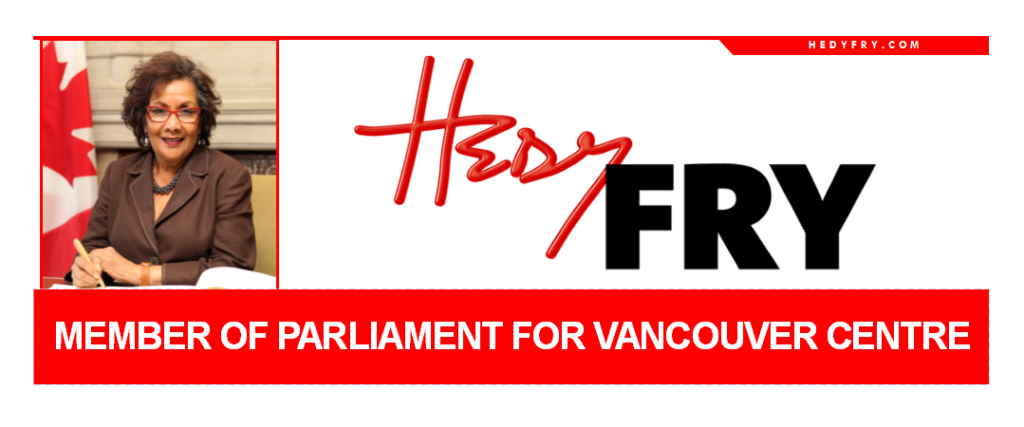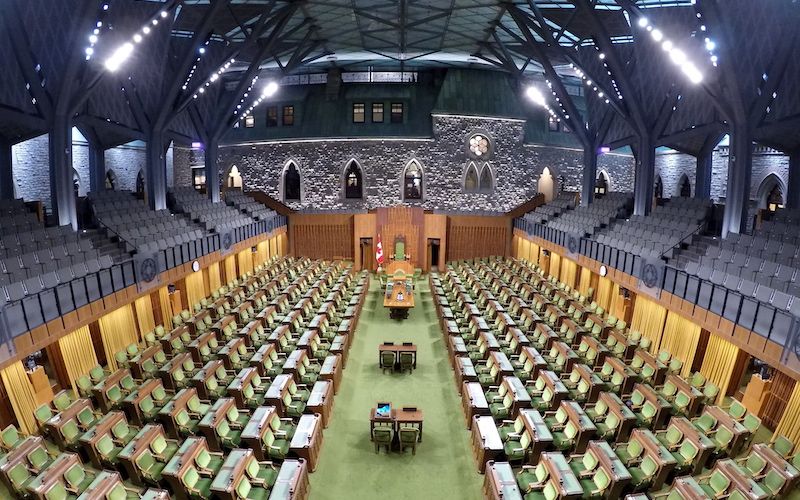
Budget 2021 contains an action plan to support families, workers and businesses to survive its effects as long as needed.
Madam Speaker, I am so proud to speak to this budget. The hon. member laid out the picture, the vision behind this budget extremely well, and I want to follow up on it.
This is a historic budget, presented by Canada’s first female finance minister. I am proud because I can see the fine hand of the Deputy Prime Minister in that budget. I can see her thinking and her vision, because it is a clear, logical, visionary budget. It is laid out in three themes, as any logical budget would do. It is a budget about people. It is about protecting people, that is the first theme; it is about supporting people, that is the second theme; and it is about investing long term in people, that is the third theme.
We are facing the greatest global human and economic catastrophe since World War II, and I think we need to remember that. This is not a crisis caused by some human error or economic mistake made by others. It is caused by a virus that is currently in full control. I want us to think about the nature of this catastrophe, because we seem to lay blame in this House for who is responsible for what and why we are not controlling the virus very well.
With the exception of Australia, New Zealand and Taiwan, every nation, every country is in lockdown right now, struggling against a third wave of mutations of the virus. Actually, Canada is holding its head above water. We hear fears raised against deficits and spending, etcetera. I want to ask my colleagues if we should have abandoned Canadians, or abandoned provinces who, constitutionally, have the ability to deliver health care? We have not done that.
We have invested $8 out of every $10 in the provinces and vaccines, to giving provinces what they need in order to deliver health care, personal protective equipment, testing, tracing, surveilling, and ensuring the basics of epidemiology: test, trace, surveil, and isolate when necessary, are followed. We have supplied the provinces with the money to be able to do all of that. However, it is their duty under the Constitution to deliver on that.
I want say what the IMF said about our response, which is the first theme in this budget, and that is because Canada used public health policies, grounded and guided by science and expertise, we were able to deal with the first wave of COVID in a very reasonable manner.
The variants are the problem right now. Until we can flatten the curve and until we get rid of COVID, nothing, no economic redevelopment, no starting of any economy, no transition, and no ability to plan for the future, will occur. Job one is getting that virus contained.
One of the things we did when it first started, as the IMF pointed out, to deal with this was we funded, $8 out of $10, the provinces and gave them the ability to deliver health care in a manner they felt fit for their particular province and region. In many cases we have seen across the country that the provinces have different responses. Some have done well, as in the Atlantic provinces, and others have not done so well. That is because provinces are dealing with health care on the ground in their provinces. That is an important thing to remember. The federal government cannot suddenly impose on provinces and tell them what we think they need to do.
This is the first part, protecting Canadians, which we have done extremely well. The IMF said that we are one of the countries that did extremely well, using science and expertise to do it.
I could sit here and say that we are putting $40 billion into this and $3 billion over two years and whatever into things we have done. However, I am hoping members have read the budget and know where all the money is going and for what reasons.
I want to talk a little about the vision behind this budget. The point is we were, and are still, trying to flatten the curve. The second part of the budget is supporting Canadians, supporting workers, families, seniors, vulnerable Canadians, and supporting businesses and helping them to stay afloat. That part of the budget was about supporting Canadians so that they could survive and cope, and so that businesses, if not rising above it because nobody can rise about it until COVID is gone, could tread water.
When the time comes and we are ready to move forward again and rebuild a new economy, small businesses will be ready to hit the ground running. That is why we looked at putting the wage supplement and the rent supplement in place for people who lost their jobs. That is why we looked to increasing sickness leave. That is how we saw the vulnerable in our society which COVID exposed to us. There are all of the women who had to leave their jobs. They did not lose their jobs. They had to leave them because they had to stay at home and take care of their children. There are all of the low wage workers who were working in risky and precarious jobs, many of them full time, who still cannot afford to make ends meet. The pandemic exposed those vulnerable people extremely well.
I think that is one of the reasons that we are looking now at how to support them with a $15 minimum wage and, of course, helping workers; single workers, not just families, to be able to make use of the taxes that can help them, again, to keep their heads above water. We helped seniors with money and we are looking at how we are going to help them to continue to function by increasing the OAS for seniors above the age of 75, and giving them a one-time amount of $500. We are looking.
We are looking at housing not only for businesses, but also to just help people pay their rent; for families to pay their rent. We are looking at how we put money into a rapid housing initiative to deal with all of the homeless, the people who have been displaced. We have put money into food banks to support people so that they can eat and feed their families.
That is what this budget is about. It is about continuing to do that on until we get rid of COVID to help people to survive, cope and have businesses to be able to keep afloat so that when the time comes they can rebound.
The third part of the budget is where I can see the Minister of Finance’s fine hand because it is a visionary budget. It is talking about the future. It is building for a resilient future. This is not going to be our last pandemic. We do not know what is going to happen. Catastrophes will occur. We need to prepare for when they happen, not fall apart like we did economically and socially. We need to be able to be resilient enough to bounce with whatever hits us. That is what this budget is doing in its third phase, which is building for the future.
The important thing about this budget is that we are finding out that all the people who fell between the cracks are going to have to be helped. This budget is about looking at building a new social infrastructure, so that we do not have to have people fall between the cracks again. We are looking at the people who have fallen and are falling. Now it is young people.
We are looking at seniors, helping them to survive and to be able to move forward.
We are looking at the tourism sector and industries that have fallen apart. We want to keep them alive so that they can rebound again. We are giving them money for marketing and to rebuild.
We are not only looking at giving small businesses the help they need to restart and to rebuild, but we are also looking at helping them into the new era.
The new economic era that we are going to build will be based on the post-industrial economy. I have listened to many international fora, such as in Europe, talking about a post-industrial recovery. It is not going to be the same old; same old. We are going to have to look at how we invest in the new economy. In Europe they have talked a lot about how automation has actually begun to kill the industrial sector and Europe has massive industrial sectors.
We are looking at how we rebuild back a new economy. We look at scientific knowledge and innovation. We are looking at harnessing our oceans. We are lucky. We are surrounded by three massive oceans. How do we get into that blue economy? How do we utilize our oceans to produce food and protein with low greenhouse gas emissions, with renewable food sources? Oceans are not just about fish. We are going to look at how we could develop that. Although, I might say that I am very pleased to see that my province of British Columbia got a lot of help with the salmon that are actually dying right now. We got enough money to be able to rebuild that particular resource.
The important thing to remember is that we are recognizing that this new economy is going to have to utilize young people, who right now have no jobs. We have kept them afloat with summer jobs and all of the other things, but we are now trying to utilize and focus on youth being able to get their first jobs, being able to get into the kinds of training that they need.






